we’re back in the cretaceous period, for the last time, i promise. imagine this: it’s a quiet day about 95 million years ago and a bunch of (about onehundredandeighty) little chicken-sized skartopus australis are just having a drink at the local river. a few wintonopus latomorum, slightly bigger, maybe the size of a turkey, have joined them (there is about seventy of them).
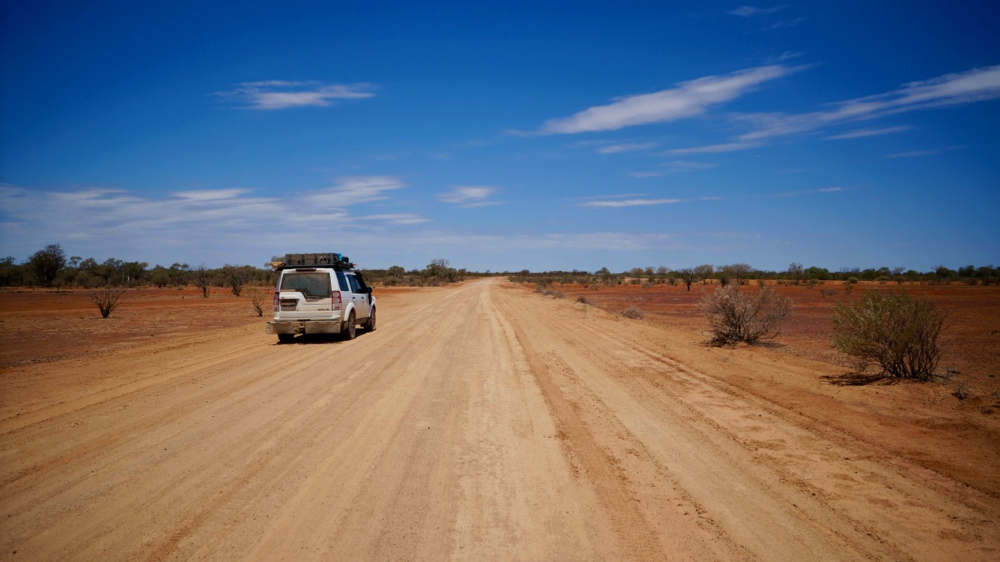
suddenly a tyrannosauropus, probably something like banjo, approaches and it dawns on everyone who thought they were having a quick drink that they had just become lunch. they all decide that now would be a good time to be somewhere else and scram.
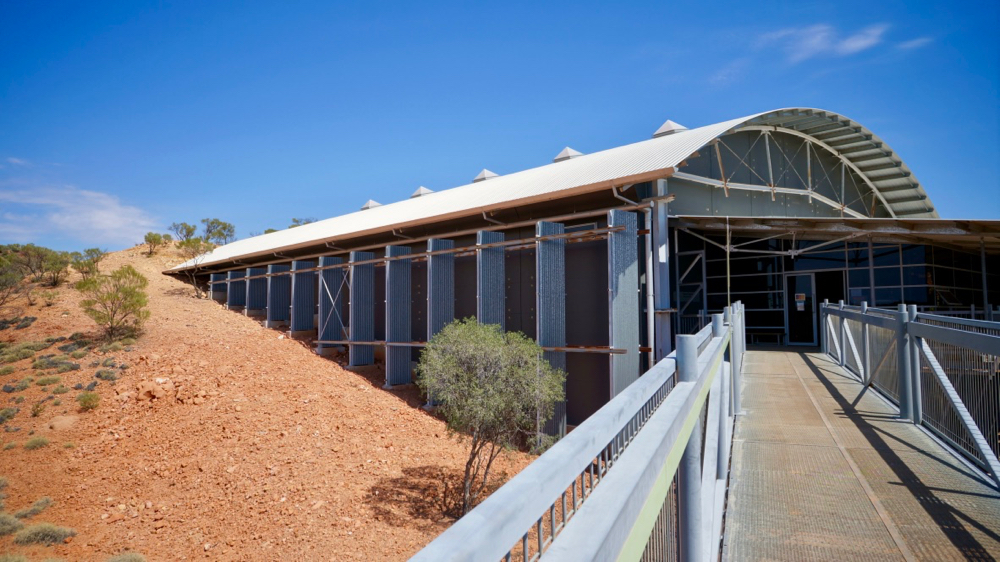
what follows is an incredible series of almost impossible coincidences: first of all these guys left their footprints in mud that had just the right consistency; too watery and the prints would have collapsed, too dry and there wouldn’t be any prints at all. then something covered the prints before they could be destroyed; scientists believe it may have been a flooding event in which river sediment covered the tracks.

and then more and more sediment accumulated … geological processes happening at glacial speed … water seeps through the sandstone and a protective iron oxide crust forms on top of the mud layer … and a mere 95 million years later some guy walks around the outback looking for opals. he turns over a rock but instead of an opal he finds a strange imprint. he shows the rock with the positive print (the one he lifted off) which he believes to be a fossilised bird footprint to a local enthusiast who realises the footprint stems from a dino instead, which makes the discovery unbelievably cool. everyone is completely amazed … and nothing happens.
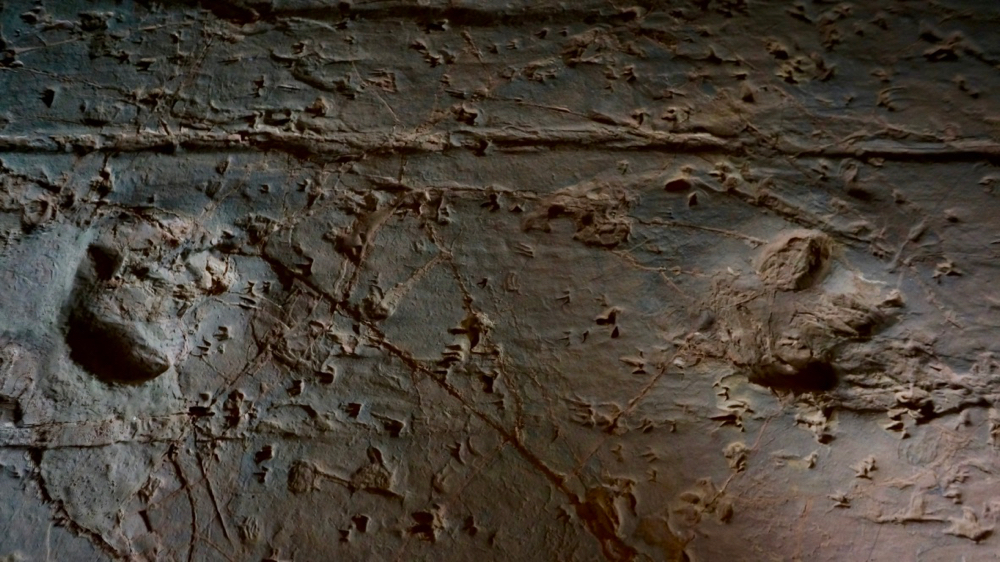
nothing continues to happen for another fifteen years, as is often the case with revolutionary discoveries. at this point palaeontologists who happen to travel through the area towards richmond hear about the discovery and surprisingly take an interest. it turns out what the station manager had discovered is the only known evidence of a dino stampede anywhere in the world! yes, you heard right: lark quarry, a mere 120 km outside the world-renowned town of winton, which is just a little over 1300 km from brisbane is the only such event set in stone.
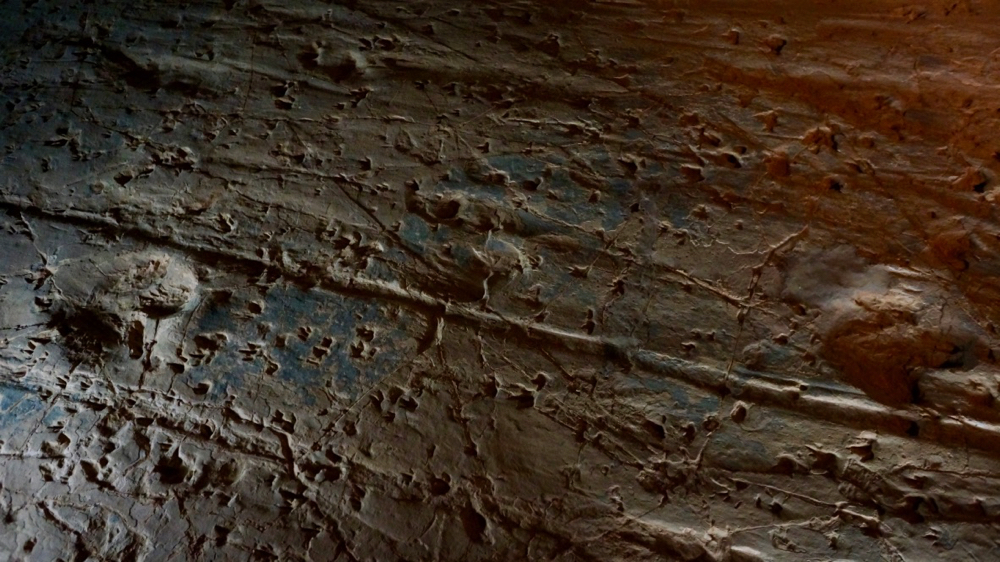
those long tracks stem from prams the dinos used to take their babies to the river for a splash … just kidding. apparently that was a tree branch being dragged along by the water.
it turns out the footprints extend over a fairly large area across quite a few of the surrounding hills, but only a small piece was excavated. scientists then immediately set about protecting the valuable find: they used a black plastic sheet weighed down with hay bales to ensure the elements would not attack the prints that were until then protected by the sandstone layer – what could possibly go wrong. unfortunately, while welding a roof structure to cover the area more permanently, sparks from a welder set fire to the hay … and melted the plastic to the rock.
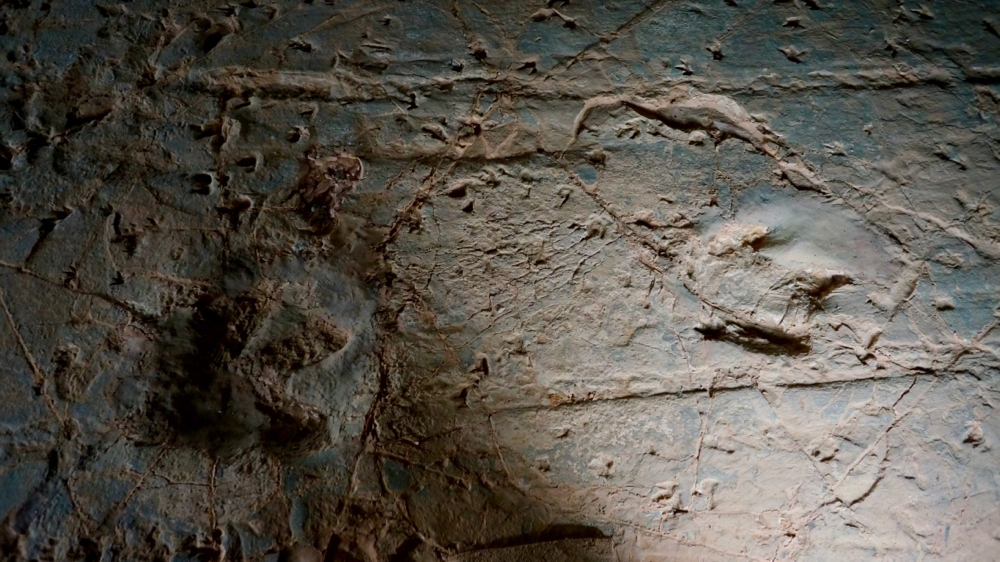
they say that stupid people make the same mistake again and again; wise people on the other hand make many mistakes. so true. since said wise people had now created shelter from the elements in the outback the local fauna moved in … as it turns out local fauna #1s and #2s are not that good for fossilised footprints either. and to cap it all off, when the final structure was erected, a wall toppled over and missed the prints ‘by that much’ – thanks agent 86. all that said the museum in its current form is fantastic and the ranger tour was great; we really enjoyed it, and i personally also enjoyed zipping through the outback in snowflake.
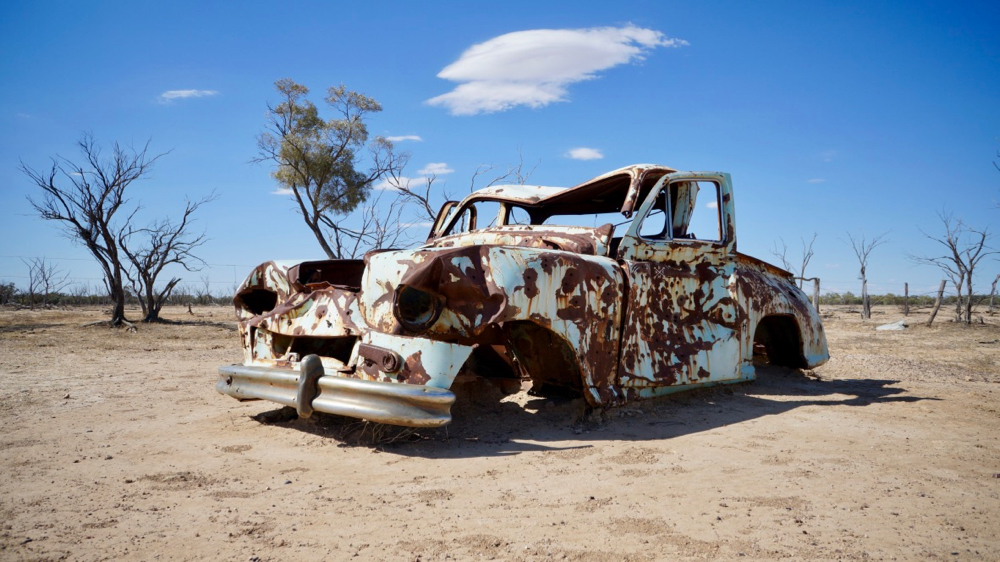
this one isn’t zipping anywhere any more; no wonder it looks slightly depressed. anyway, this was the last stop on our trip along the dino trail. so if you are in the area … who am i kidding.
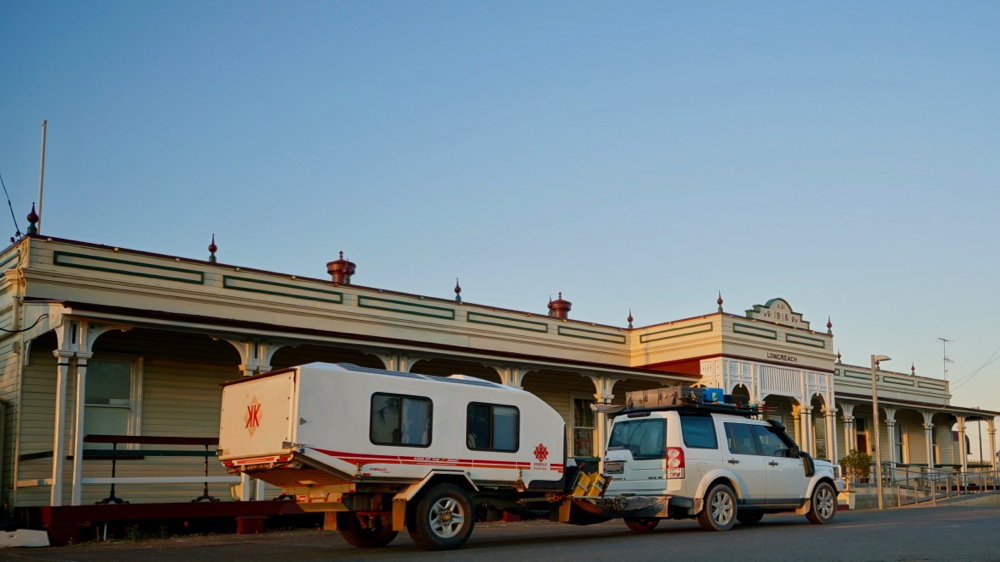
another 180 km further and we arrived at our next stop: the famous outback town of longreach, home of the qantas museum. dinos of a different kind ….
